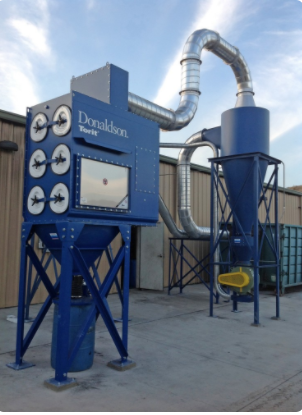Last December, we provided tips for Winterizing Your Ventilation System to maintain a successful environment in your facility during cold weather. Here are a few additional Ventilation System Winterizing Tips to keep workers and equipment safe and productive this winter.
Outside Dust Collectors
If your dust collector is located outside, there are a few things that should be done to keep it operating efficiently in cold weather. First, filters should be checked and changed if fully loaded. It is no fun changing filters in the middle of a winter storm. Next, add a heater or insulation wrap to the hopper and housing. This will help prevent condensation from building-up. Lastly, install a dryer in compressed air lines to remove water and prevent freezing water from damaging solenoid valves.
Replace Unit Heaters
Old style unit heats are not very energy efficient. Additionally, they do little to circulate the air resulting in stratification of the hot air near the roof. A better solution is to install an energy efficient high temperature heating & ventilation system (HTHV). The new HTHV technology can save over 20% of the energy cost to heat a facility. If reducing your carbon footprint is important, HTHV heaters are a great solution. We recommend the Cambridge Air Solution HTHV heaters which have the lowest total cost of ownership when compared to other heating technologies.
 Repair or Replace Backdraft Dampers
Repair or Replace Backdraft Dampers
Backdraft dampers are an important part of a ventilation system. When fans are turned off, they keep out bugs and birds in the summer and cold air in the winter. Backdraft dampers that are broken or damaged will need to be replaced before cold weather arrives to minimize cold air infiltration and reduce your heating costs.
Conclusion
If last winter taught us anything in Texas, it is that we need to be ready for severe winter storms. These additional Ventilation System Winterizing Tips will help you be prepared to protect workers and equipment when cold weather arrives.
